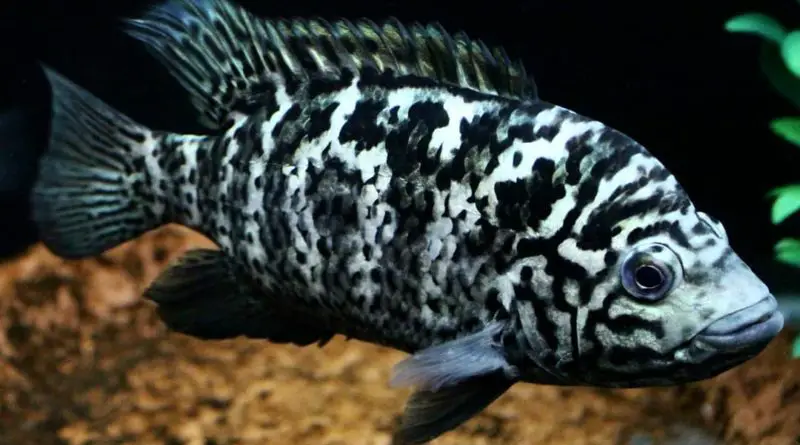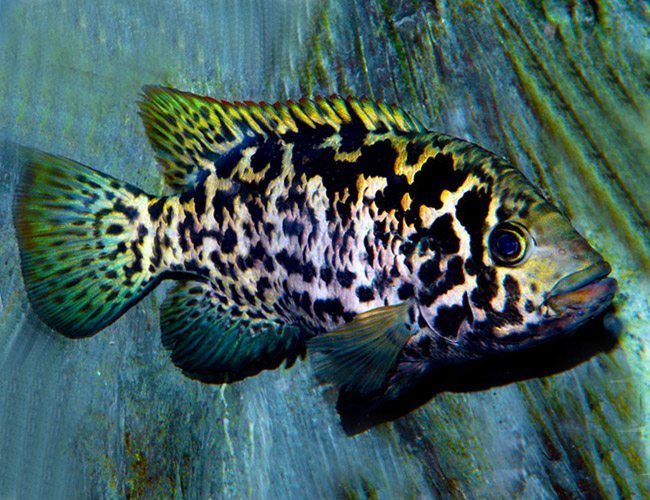Cuban Cichlid Size
The Cuban Cichlid is a beautiful and fascinating fish that can make a great addition to any aquarium. One of the most important aspects to consider when owning a Cuban Cichlid is its size, which can vary greatly depending on a number of factors. If you're interested in learning more about Cuban Cichlid size and how it can impact your experience as an owner, keep reading!
Pain Points Related to Cuban Cichlid Size
If you're considering getting a Cuban Cichlid, it's important to understand that this species can grow quite large. If you don't have a lot of space to spare in your aquarium, the size of the Cuban Cichlid could quickly become a problem. Additionally, larger fish require more food, which can be costly and time-consuming to keep up with.
The Target of Cuban Cichlid Size
The average Cuban Cichlid can grow to be between 12 and 14 inches in length. However, some individuals may reach up to 18 inches. It's important to keep this in mind when selecting an aquarium for your fish. You'll need to ensure that you have enough space to accommodate a fish of this size, as well as a filtration system that can handle the waste produced by a larger fish.
Summary of Cuban Cichlid Size and Related Keywords
In summary, the Cuban Cichlid is a stunning species that can be a joy to own. However, its size can pose challenges for owners who do not have the space or resources necessary to accommodate a larger fish. If you're interested in owning a Cuban Cichlid, be sure to research its size requirements and plan accordingly.
Cuban Cichlid Size: Personal Experience
When I first became interested in keeping a Cuban Cichlid, I was drawn in by the fish's vibrant colors and captivating personality. However, as I began to learn more about the species, I quickly realized that its size would be a potential issue for me. Ultimately, I decided that I didn't have the space to give a Cuban Cichlid the home it deserves, but I still find the fish to be fascinating and beautiful.
If you're considering keeping a Cuban Cichlid, it's important to keep in mind that they do require a significant amount of space and resources. However, if you're up for the challenge, owning one of these fish can be a truly rewarding experience.
Cuban Cichlid Size: Tips and Tricks
One important tip to keep in mind when selecting an aquarium for your Cuban Cichlid is to choose a tank that is large enough to accommodate the fish's eventual size. It's always better to err on the side of caution and choose a larger tank than you think you'll need, rather than running into issues down the line.
Another key factor to consider is the type of filtration that you'll be using in your aquarium. A larger fish like a Cuban Cichlid can produce a significant amount of waste, so it's important to choose a filter system that can handle the job.
Understanding Cuban Cichlid Growth
It's important to keep in mind that Cuban Cichlid growth can vary significantly based on a number of factors. The fish's genetics, diet, and living conditions can all impact its eventual size. Additionally, some Cuban Cichlids may grow more quickly than others, while some may experience growth spurts at different times in their lives.
Cuban Cichlid Size and Breeding
If you're interested in breeding Cuban Cichlids, it's important to keep in mind that the size of the fish can impact the success of your breeding program. Larger fish may be more aggressive towards smaller fish, which can make it difficult to create a harmonious breeding environment. Additionally, larger fish may require more space to move around in, which can be a challenge when trying to manage a breeding tank.
Question and Answer
Q: How can I tell if my Cuban Cichlid is growing properly?
A: One way to determine if your Cuban Cichlid is growing properly is to monitor its weight and length over time. Additionally, you may notice a significant increase in appetite and activity levels as the fish grows.
Q: How often should I feed my Cuban Cichlid?
A: Cuban Cichlids should be fed at least twice per day, and may require additional feedings if they are particularly active or growing quickly. It's important to choose high-quality foods that are appropriate for the species, and to avoid overfeeding, which can lead to health issues down the line.
Q: Can Cuban Cichlids live in a community tank with other fish?
A: While Cuban Cichlids can be territorial and aggressive towards other fish, they can coexist with other species in a community tank if you take the time to select appropriate tank mates. Look for species that are similar in size and temperament to your Cuban Cichlid, and avoid adding in any fish that may be seen as a threat.
Q: How long do Cuban Cichlids typically live?
A: With proper care, Cuban Cichlids can live for up to 10 years or more in captivity.
Conclusion of Cuban Cichlid Size
If you're considering keeping a Cuban Cichlid, it's important to keep in mind that its size is an important consideration. With the right resources and planning, however, owning one of these mesmerizing fish can be a truly rewarding experience.
Gallery
Cuban Cichlid (Nandopsis Tetracanthus) - Aqua Imports

Photo Credit by: bing.com / cuban cichlid nandopsis
The Cuban Cichlid - Coolfish.network

Photo Credit by: bing.com / cuban cichlid network cichlids fish
Cuban Cichlid Pond Fish | Arizona Aquatic Gardens

Photo Credit by: bing.com / cuban cichlid fish pond size
The Brackish Tank • Cuban Cichlid/Biajaca Genus: Nandopsis Species:...

Photo Credit by: bing.com / nandopsis cichlid brackish genus cuba
Cichlids.com: Cuban
Photo Credit by: bing.com / cuban cichlids vieja india dovii